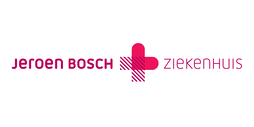Collaboration JADS and Jeroen Bosch Hospital on Artificial Intelligence to further improve healthcare
Posted on
The three organizations have developed a program in the field of AI in Radiology, consisting of four lines that were started simultaneously. They vary from the implementation of validated AI software in clinical practice to the development of a new software program.
“In this collaboration, we consciously opted for knowledge institutions. Precisely because we do not have the AI knowledge needed but are looking for ways to develop it. We want to understand something that is so crucial to our future care ourselves and to be able to estimate it, and not just depend on commercial parties, “says Inge Veltman, JHA innovation manager. “AI will eventually become a permanent part of the practice of our healthcare professionals. Medical Specialists will work more closely in this area in the future with clinical physicists, clinical computer scientists and data scientists. ”
Bram van Ginneken, professor of medical image analysis at Radboudumc and participating in the project, is enthusiastic about the collaboration: “Deep learning is causing a revolution in our field. It is now finally possible to create computer programs that can evaluate scans with an accuracy comparable to human experts. We now need to collaborate with multiple hospitals to jointly create new solutions and test and implement existing solutions in clinical practice. With JBZ we have been able to start collaboration in several areas in a very short time. ”
Implementation of existing software program (line 1)
When implementing a validated software program, boneXpert was chosen, a program that allows you to monitor the growth of children on the basis of skeletal age. The computer is faster and more accurate than radiologists. Matthieu Rutten, radiologist at the Jeroen Bosch Hospital: “It is important to estimate the age properly because it is used to determine whether or not hormone therapy can be applied. Between radiologists there can be a variation in estimation of 1 to 2 years. ”The implementation of this program was quite effortless for both pediatricians and radiologists. Both specialisms now work with it.
Distinction between benign and malicious (line 2)
Line two is the deployment of a software program developed at Radboudumc for the detection of densities in the lungs. The aim is to validate the software in the JHA, further improve it and implement it in the clinic. The software is now programmed in such a way that it also assesses whether the densification is good or malicious. This estimate can be used to make a decision to take a biopsy. This can prevent unnecessary stress for the patient. In a first test, the deep learning system already outperformed radiologists.
Recognize miniscule wrist fractures (line 3)
For the third step, the development of completely new software, the most common and hard to detect fracture of the wrist joint was chosen, namely that of the scaphoid (the carpal bone on the thumb side of the wrist). Missing this fracture can have a major clinical impact for patients. The development of the software starts with training the computer by entering thousands of photos so that the computer will recognize the scaphoid and the fracture. For this line, a full-time PhD student is working at JBZ, supervised by Matthieu Rutten (JBZ) and professors Bram van Ginneken from DIAG and Eric Postma from JADS.
Research into clinical implementation AI (line 4)
In the fourth line, the three organizations jointly examine what the answer is to the issues that you encounter when you implement AI in the daily practice of the hospital. Issues that comprehend, among other things, the technical infrastructure, the organization of your organization, the costs and the legal implications. This is picked up by, among others, master students, a PhD student and a clinical computer scientist in training.
Digital transition
The AI process is part of the digital transition that the hospital has initiated. The idea is to make it an integral part of daily hospital practice in the coming years. In addition, JADS focuses on retraining and continuing education of healthcare professionals through post-initial training such as Data Science in Health. In this way, knowledge about AI and data science is not only developed but also introduced into the healthcare sector through other means to widely support the digital transition of healthcare.